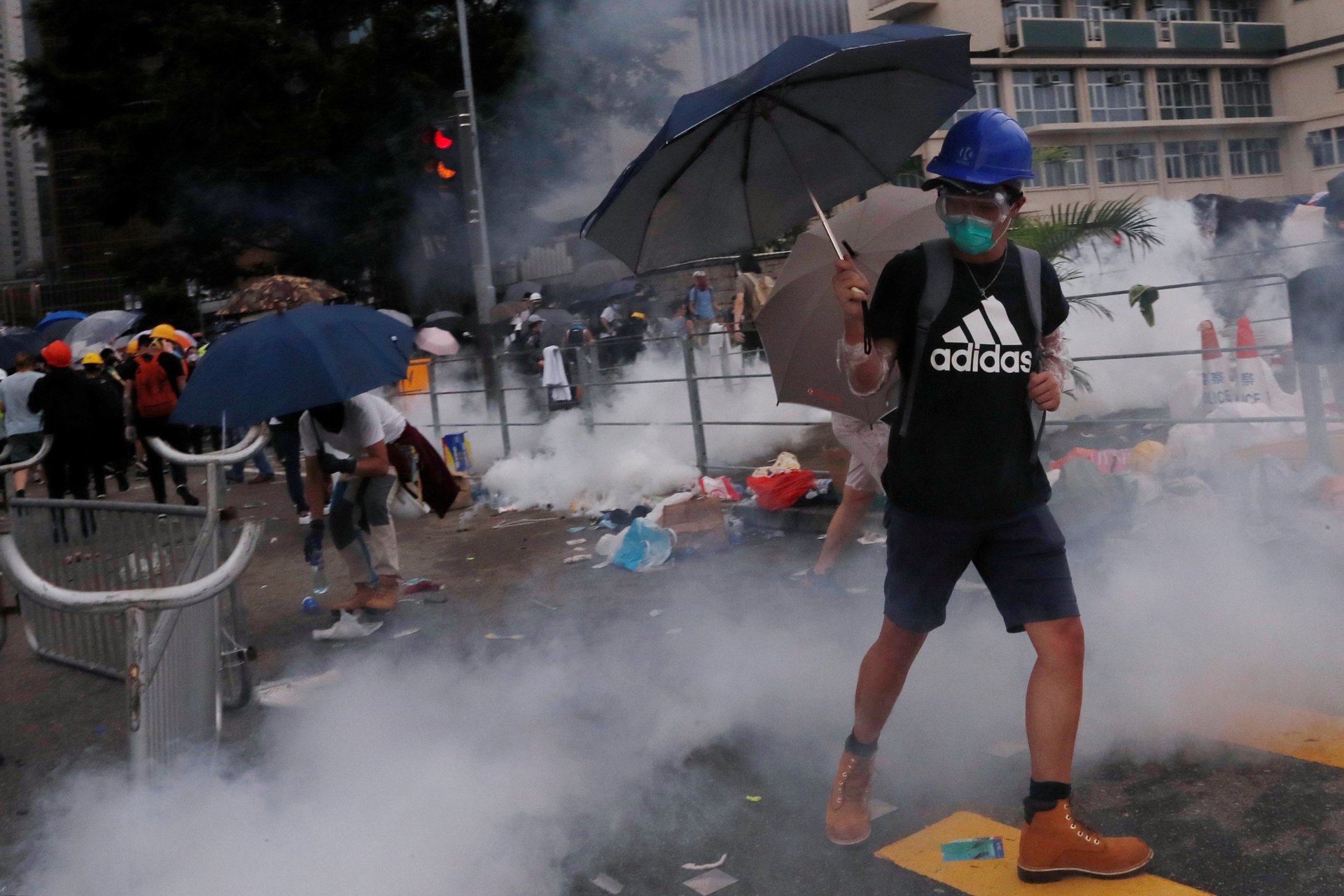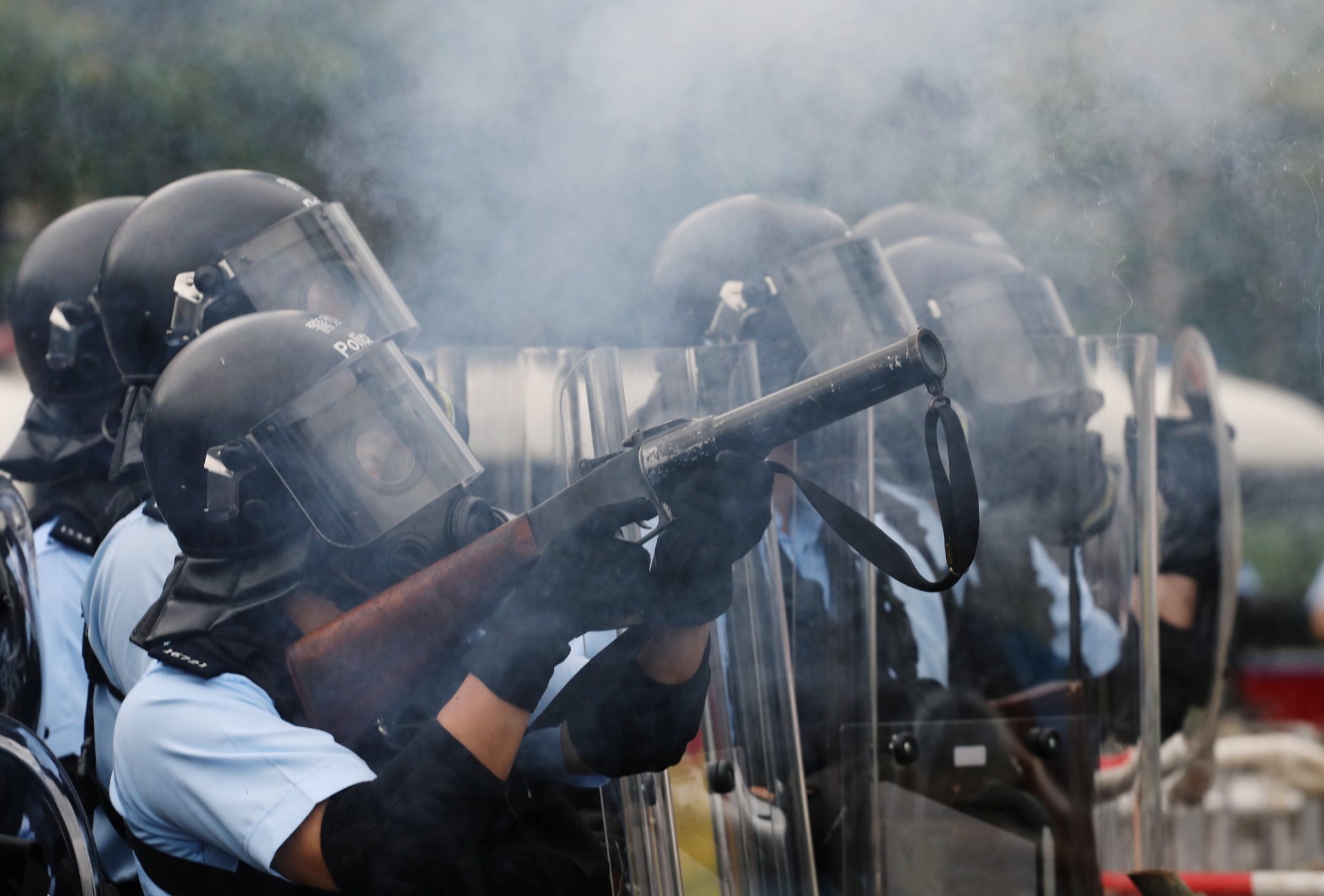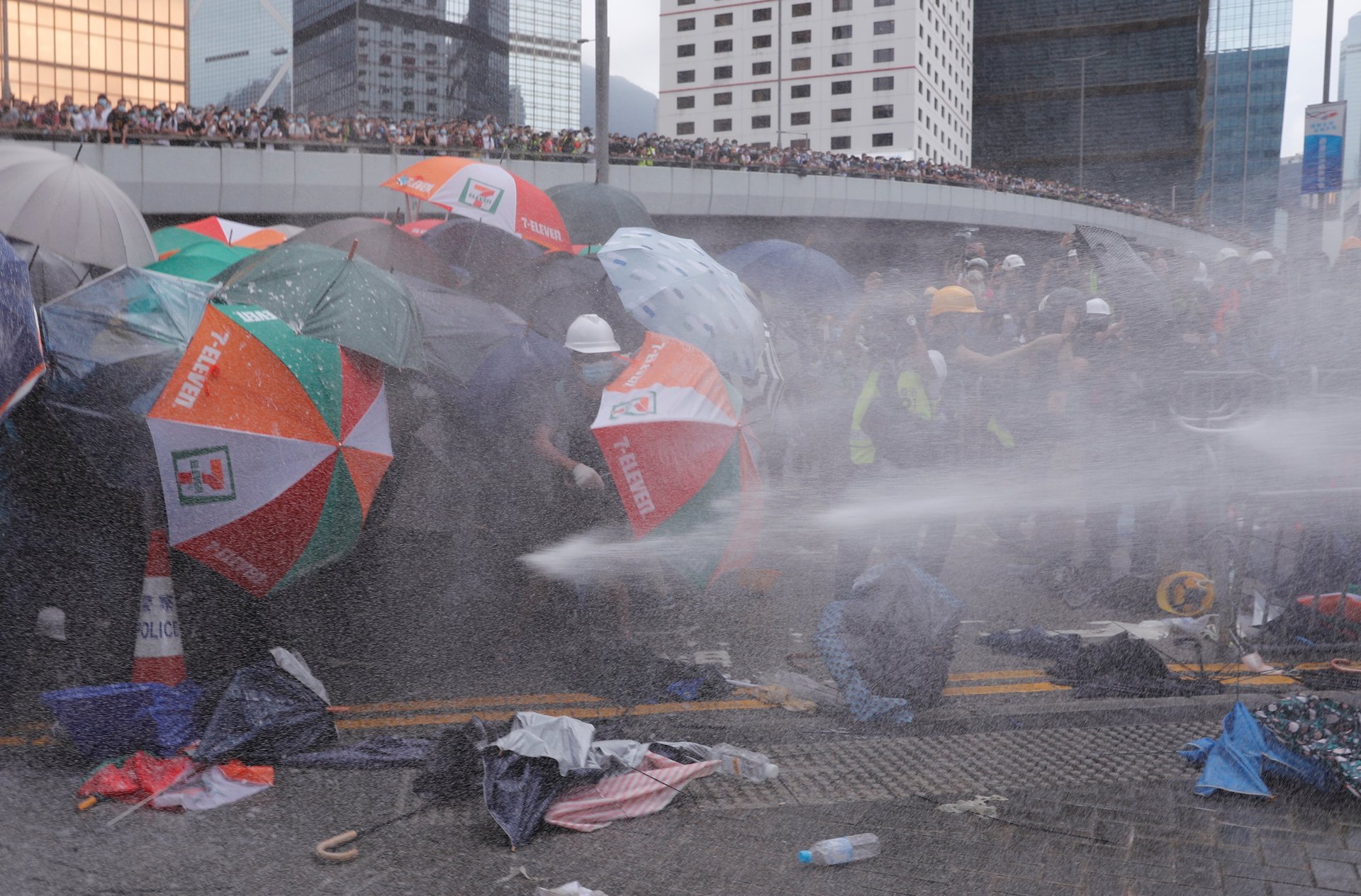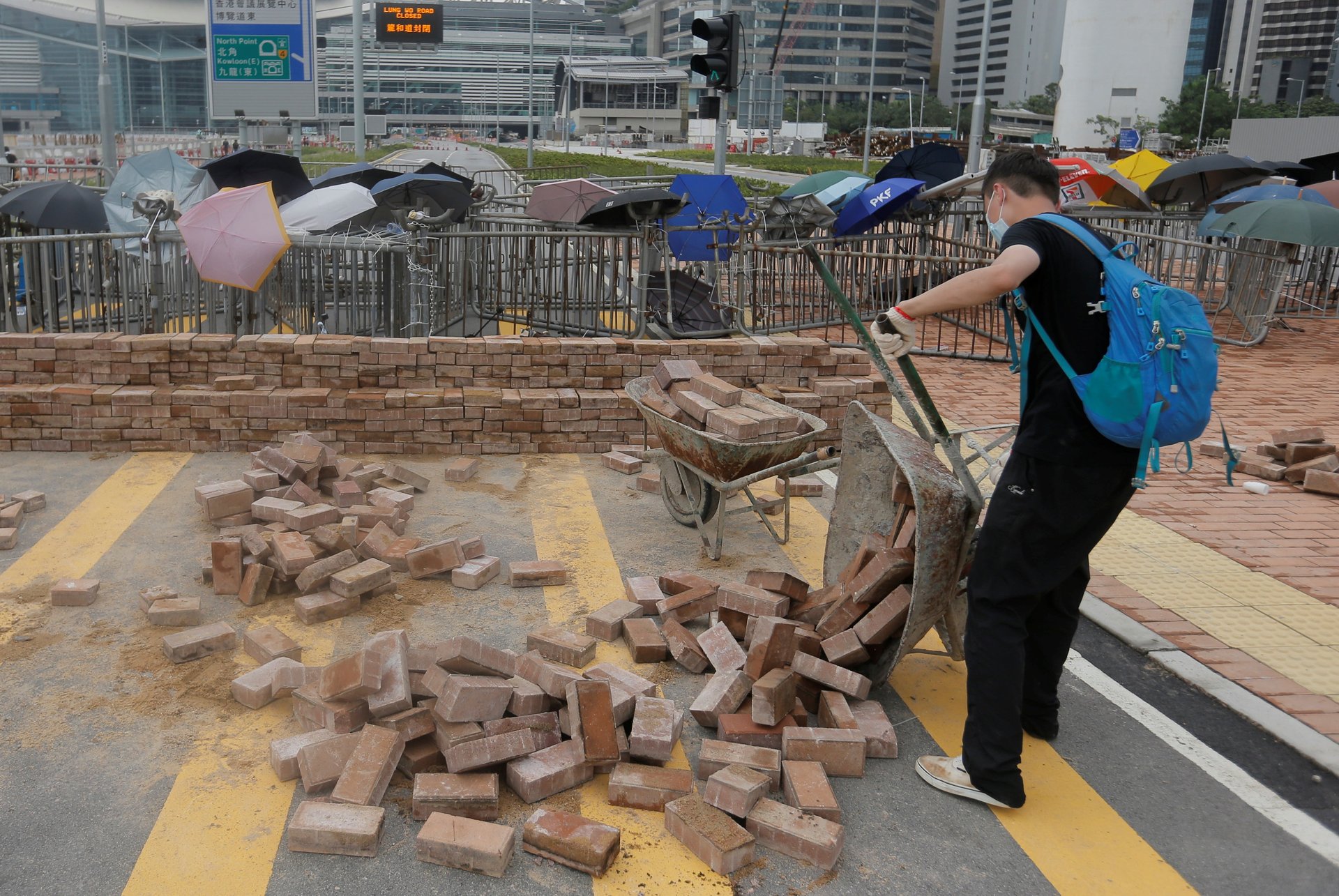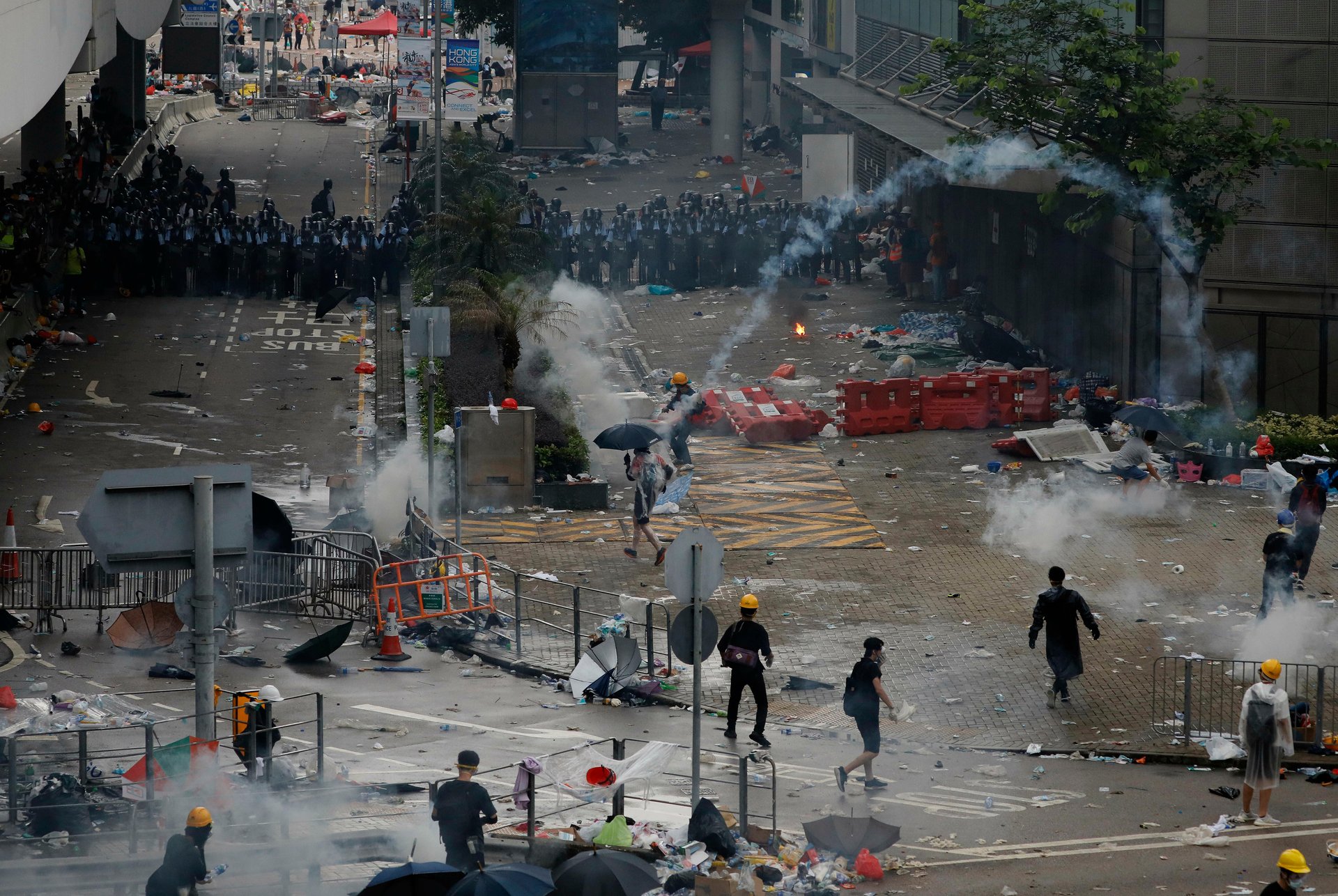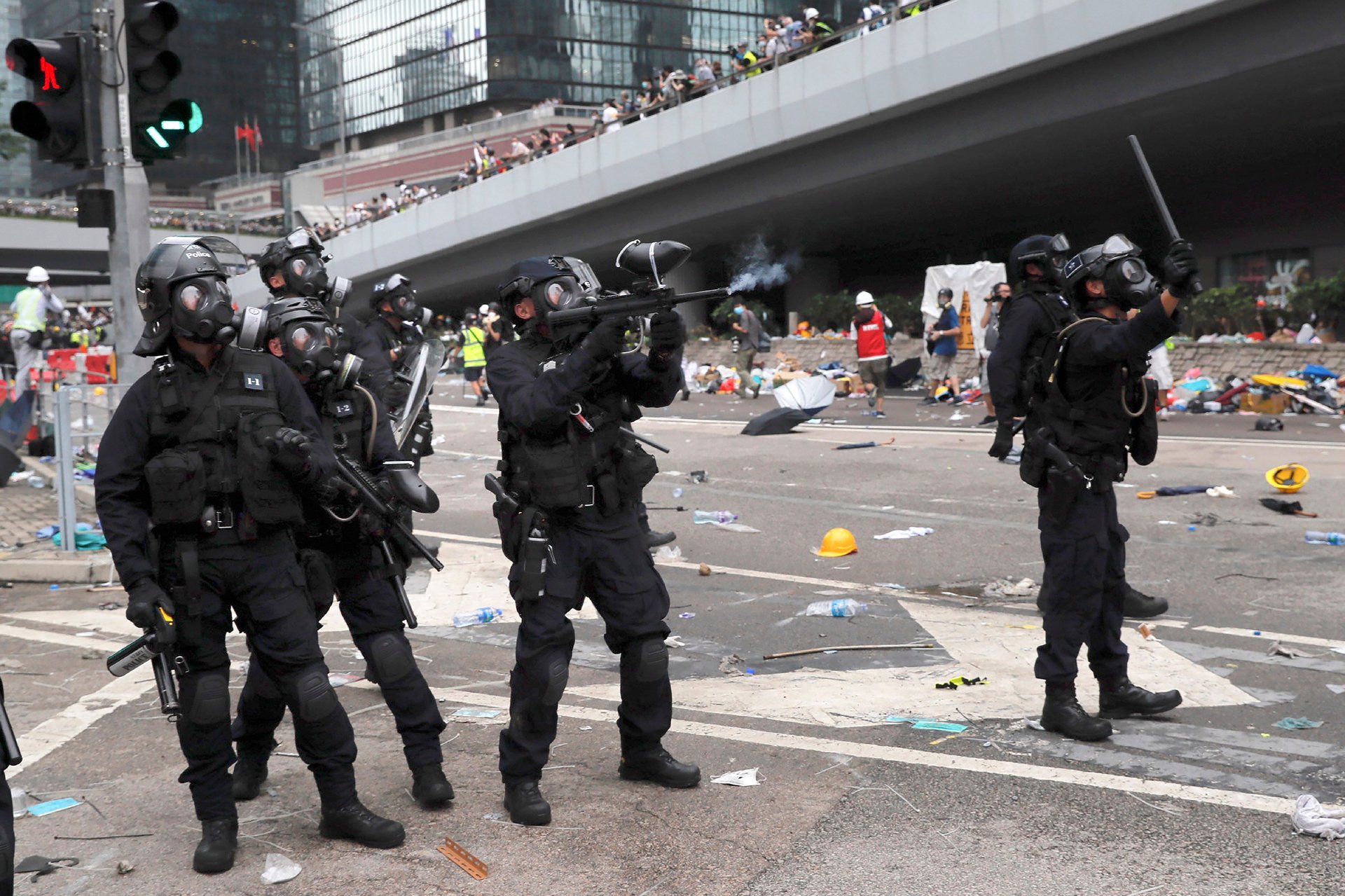Photos: Tear gas and rubber bullets return to the heart of Hong Kong
A tense standoff in Hong Kong between protesters and riot police boiled over into outright clashes this afternoon, with tear gas and rubber bullets fired at the civilian crowd.
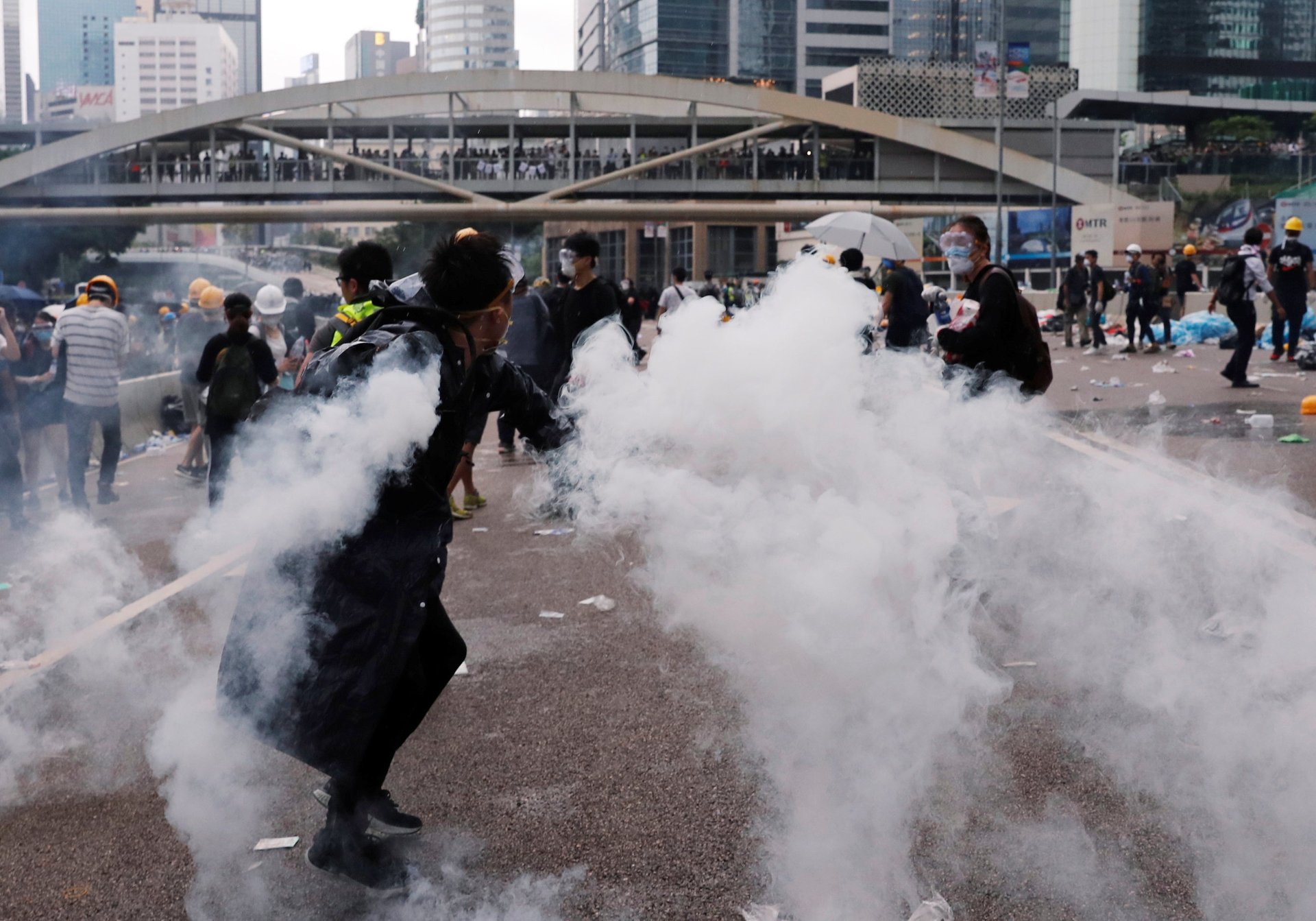

A tense standoff in Hong Kong between protesters and riot police boiled over into outright clashes this afternoon, with tear gas and rubber bullets fired at the civilian crowd.
People had begun gathering outside the city’s central government offices last night, and by this morning (June 12), their numbers had swelled to tens of thousands as they occupied a large swathe of a major highway in the Admiralty district, part of a second wave of protests against a controversial proposed extradition law that would make it possible for Hong Kong to send suspects to mainland China to face trial for the first time in almost a century.
The protesters’ occupation of roads outside the legislature forced the government to postpone a second reading of the bill, which was scheduled to begin this morning, and would have set the clock ticking to a vote as soon as next week. It marked a victory of sorts, albeit a temporary one that brought no lasting reassurance. “They’re just delaying” and the reading could re-start suddenly again, said Corrossa Lee, 59, who was present at the Admiralty protest site. Protesters want the proposed bill, which they call an “evil law,” scrapped.
Addressing the media just shortly after 4pm, less than an hour after clashes began, Hong Kong’s police commissioner Stephen Lo called the demonstrators “thugs” and declared the protests a “disturbance.” A police spokesperson later clarified to the South China Morning Post that Lo had meant “riot.” The Hong Kong government also described the events of today as a riot, which could mean more severe penalties for those held in connection with it.
Lo added that protesters had used “very dangerous weapons,” including metal barriers, bricks, and sharpened metal poles. Another police representative, Kong Wing-cheung, said that the force would use “appropriate force to control the situation” and “won’t rule out any method.” In addition to tear gas and rubber bullets, the police also confirmed the use of beanbag rounds, also known as flexible baton rounds.
As of 7pm local time today, police had cleared protesters from the Admiralty site. Many of them have moved west to Central, where they are blocking roads—many of the same roads that were occupied in 2014—resting, and restocking on supplies.
In a televised interview with local broadcaster TVB that aired this evening, chief executive Carrie Lam pushed back on critics’ claims that by pushing for this bill, she is betraying Hong Kong: “Selling out Hong Kong? How can I sell out Hong Kong? I was born here, grew up here. I love this place, and it’s driven me to make a lot of personal sacrifices.”
Asked if she would shelve the bill, Lam said that debate over the law would continue in the legislature—implicitly suggesting that the government would push ahead with legislation.
She also made an analogy that seemed to show a paternalistic view of her role as the top government official in Hong Kong. As a mother, she said, she can’t cave in each time her son demands something. Making compromises would make for a good relationship with her son in the short run, but doing so in the long run would just spoil him. “When he grows up…he would have regrets and ask me why I didn’t tell him to do the right thing,” she said.
Lam’s interview was recorded this morning, as protesters were arrived in central Hong Kong prepared for a showdown. Volunteers handed out surgical masks to protesters as they streamed out of the train station and also throughout the crowd. Many wore goggles. Several dozen donned ponchos marked with giant blue crosses and formed a human wall to guard a first aid post.
They also set up central supply stations close to the train station, with protesters dropping off materials like plastic cling wrap to protect exposed skin, goggles, helmets, saltine crackers, umbrellas, and first aid items. The supplies were then sorted and brought to smaller supply stations throughout the protest site. Protesters even set up recycling stations.
At the train station, scores of protesters lined up to buy tickets with cash because they feared having their presence at the protests tracked if they used their rechargeable Octopus cards, which are often linked to credit cards.

